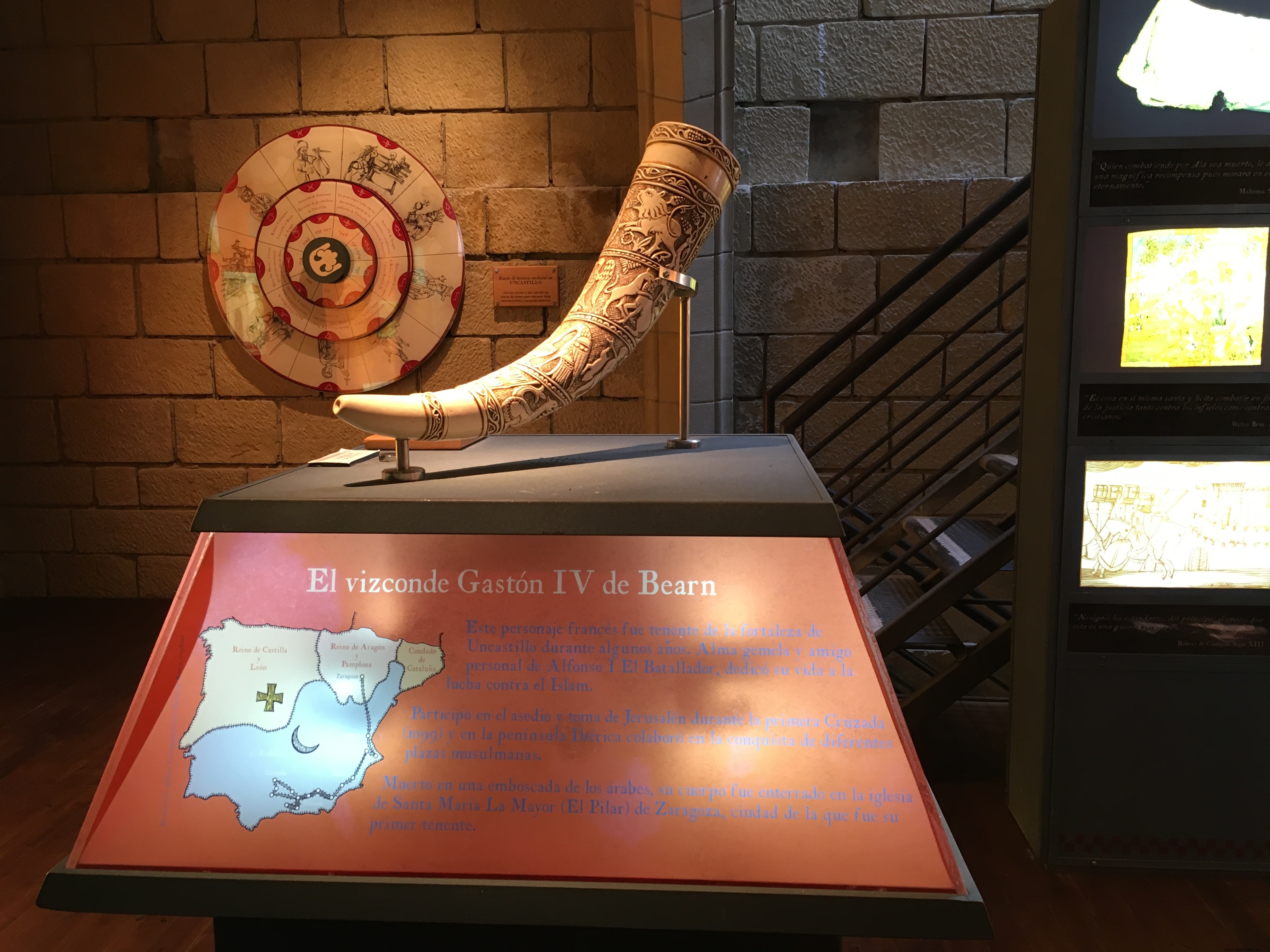Today's post takes us back to the convulsive early years of the Christian peninsular kingdoms, in which they were so busy trying to define their borders and their own identity against to the rest of the monarchies descended from the Visigoths as well as to gain ground from the Muslim occupants of the ancient Roman province of Hispania.
Specifically we have to place ourselves in the year 1134, in which the king of Aragon Alfonso I El Batallador dies. He had ascended the Aragonese throne in 1104 on the death of his brother Pedro I. In addition, from 1076 the title of King of Aragon also carried that of King of Navarre, since in that year it fell to the Aragonese Sancho Ramírez, father of both Pedro I as Alfonso I.
It is not the subject of this entry narrates the reign of Alfonso I El Batallador; suffice it to say that he owed his name to his tireless work in conquering new lands from both the neighboring kingdom of Castile and the Muslim kingdoms (he conquered Zaragoza in 1118). And it was precisely when he was in one of those battles, in Fraga in 1134, that he was wounded by an arrow and died days later.
His stormy marriage to Urraca of Castile had not been blessed with an heir prior to its dissolution by papal decree. This led to his death raising the problem of succession.
Alfonso had designated the Overseas Military Orders as his heirs, which was not accepted by the Aragonese, who were divided. The first name proposed was that of the deceased king's brother, Ramiro II, called El Monje for having held said condition for more than forty years.
The Navarrese opposed this designation and proposed their own candidate, García Ramírez. For its part, the Aragonese nobility, who did not accept that Navarre was separated from the kingdom, was in turn divided between those loyal to Ramiro II and those who chose to offer the crown to Alfonso VII of Castile.
The legend known as "The Bell of Huesca" tells how Ramiro II summoned his nobles in that city announcing that he had cast a bell whose tolling would be heard throughout Aragon. Always according to legend, he made the most rebellious one by one go to a room where he cut off their heads and placed all of them forming a circle in whose center was, as a clapper, that of the most rebellious of the nobles of the. In this way the tolling of the Bell of Huesca resounded, effectively, throughout Aragon.
Beyond the legend, the three years of Ramiro II's rule were extraordinarily convulsive, with Alfonso VII of Castile setting up his royals in Zaragoza and García Ramírez of Navarra committing to a series of pacts with Ramiro II in Valdoluengo just as an excuse to try to take prisoner the Aragonese who was forced to flee to the Huesca monastery of San Juan de la Peña.
Meanwhile, the Aragonese nobles were offering their allegiances to one or another monarch according to their convenience and often changing sides depending on the development of events. However, among all of them, the story of Talesa de Bearn stands out, both because of her status as a woman and because of the fact that she is the tenant of a fortress and also one of the most important in the kingdom:that of Uncastillo.
Talesa was the wife of Gastón de Bearn, formidable warrior, veteran of the Crusades, lord of Uncastillo and inseparable companion in arms of Alfonso I El Batallador. After the capture of Zaragoza in 1118, the king named Gastón Lord of Zaragoza and gave him control over the neighborhood of Santa María la Mayor, as well as possession of the castle in the town of Uncastillo.
-

- Reconstruction of Gastón de Bearn's war oliphant in Uncastillo castle,
In 1124 Alfonso I set out to conquer the Muslim possessions in Andalusia; The new Lord of Zaragoza accompanied him with the mythical and inseparable oliphant that sounded every time he entered battle. Gastón de Bearn continued with his king in his numerous campaigns until he found his death in 1130.
After her death, her widow Talesa inherited the fortress of Uncastillo, and kept it when Ramiro II came to the throne; Like all the rest of the Aragonese nobility, she had to choose between the different candidates for the throne. Ramiro II's decision to marry Inés de Poitiers, from the house of Aquitania, made Talesa decide to give her support to the Navarrese García Ramírez, since the houses of Bearn and Aquitania were not exactly friends of hers. In addition, Ramiro refused in a meeting in San Juan de la Peña to grant her the lordship of Zaragoza that her husband had held.
Talesa returned to her fortress in Uncastillo, from which she contacted García Ramírez in order to deliver the town to him, against the wishes of the population of the village Thus, in 1136 there was a confrontation in Uncastillo between the defenders of the fortress who intended to hand it over to the Navarrese and the citizens loyal to the king, who ended up prevailing. King Ramiro II rewarded the inhabitants of the town by granting them the so-called privilege of ingenuity and frankness.
Talesa continued to retain her status as Lady of Uncastillo and, although in 1144 she granted a will in which she expressed her wish that it pass to the Order of the Temple upon her death, when this occurred in 1154, the regency of the same was granted to the count of Barcelona and prince of Aragon Ramón Berenguer IV.
The town of Uncastillo, and more specifically its fortress, would once again be destined to play a leading role in the struggles between the kingdoms of Aragon, Navarra and Castile in 1363...but that is another story.
Photos:author's archive.
